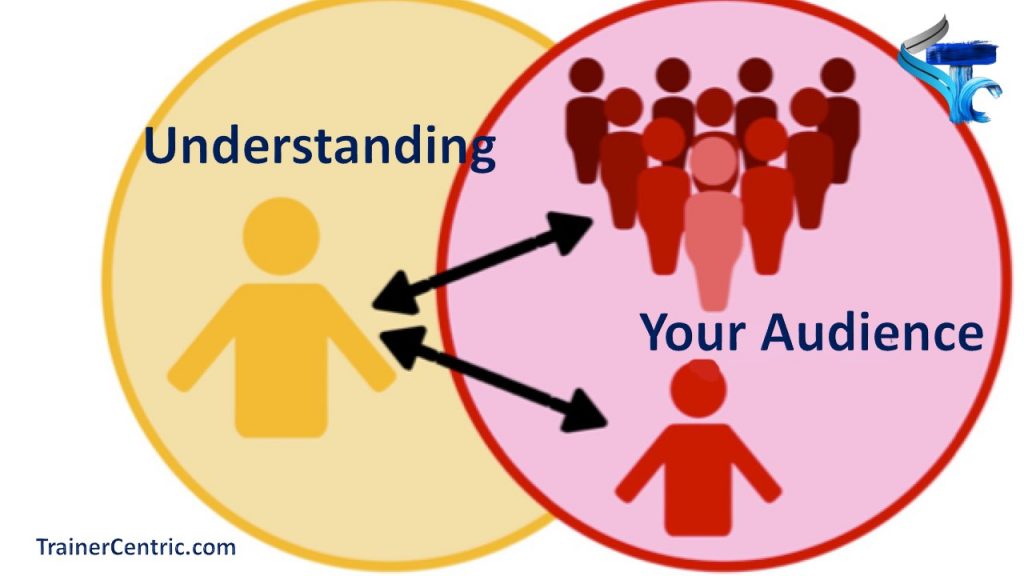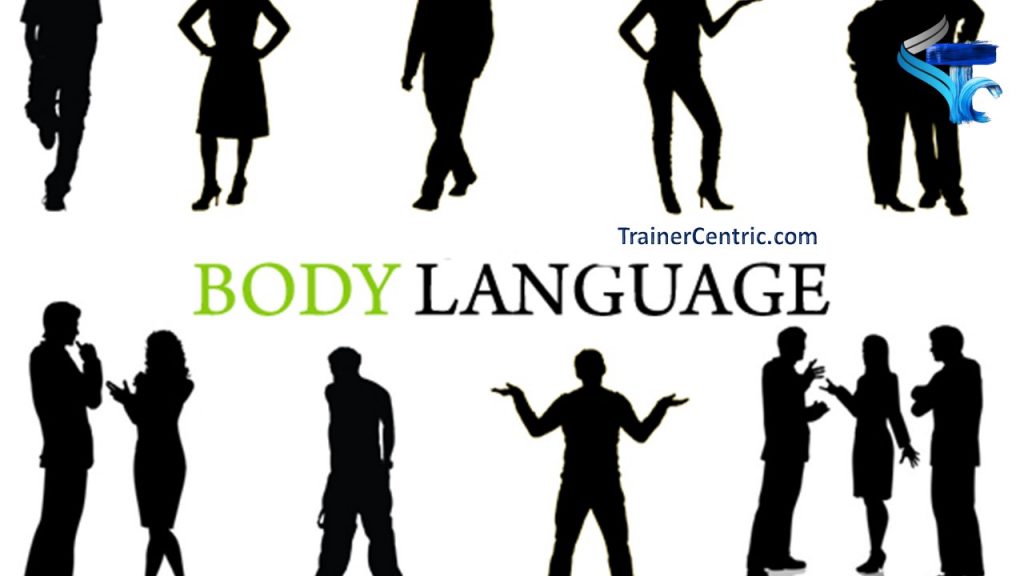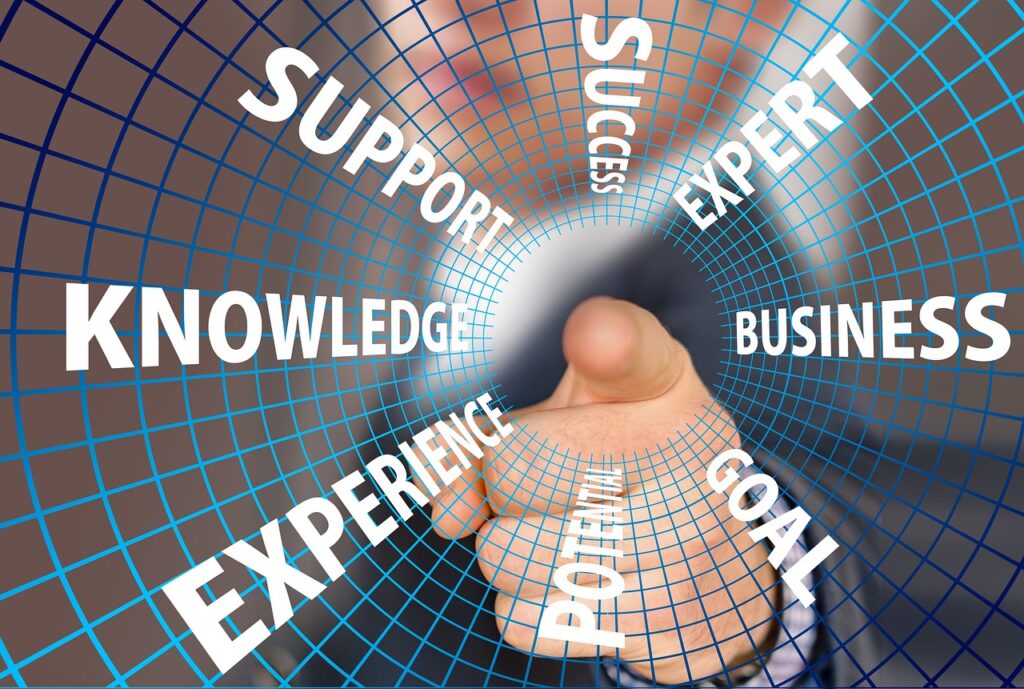
Effective presentation skills are a crucial aspect of both personal and professional success. Whether you are delivering a business pitch, educational lecture, or a speech at a social gathering, the ability to communicate your ideas clearly and persuasively is a valuable skill. In this article, we will explore the art of effective presentation skills, discussing strategies and techniques to help you become a more confident and captivating presenter.
The Significance of Effective Presentation Skills
Career Advancement:
One of the primary reasons to develop strong presentation skills is the potential for career advancement. Whether you are in sales, management, marketing, or any other profession, the ability to present your ideas convincingly can set you apart from your peers. A confident presenter is more likely to get noticed and considered for promotions or leadership roles.
Enhanced Communication
Effective presentations facilitate better communication. Whether you’re speaking to a small team or a large audience, your ability to convey your message clearly can help prevent misunderstandings and promote productive dialogue. It is not just about what you say but how you say it that matters.
Impact on Sales and Marketing
In sales and marketing, persuasive presentation skills can be the difference between closing deals and losing potential clients. A well-structured presentation that highlights the benefits of your product or service can sway customer decisions and increase your sales.
Understanding your Audience for Effective Presentation Skills
One of the most critical aspects of delivering an effective presentation is understanding your audience. Your ability to connect with your listeners and tailor your message to their needs and expectations can significantly enhance your presentation skills. Here are few benefits that can enhance your presentation skills by understanding your audience.
Tailored Content
Understanding your audience is an integral part of presentation skills and allows you to create content that resonates with them. Tailoring your message to their interests, knowledge level, and concerns makes your presentation more relevant and engaging.
Increased Engagement
When you speak to your audience’s needs and interests, you’re more likely to capture their attention and keep them engaged throughout your presentation. This results in better retention of your message.
Building Credibility
Adapting your presentation to your audience’s preferences and expectations demonstrates that you’ve done your homework. This builds credibility and trust, making your audience more receptive to your ideas.

How to Understand Your Audience for Effective Presentation Skills
Understanding your audience is fundamental to effective presentation skills. By researching your audience, tailoring your content, and addressing their needs, you can create more engaging and effective presentations. This not only benefits your audience but also builds your credibility as a speaker.
Remember that a successful presentation is not just about what you say; it’s about how well you connect with your audience. However, the big questions is how to understand your audience. Here is a proven 6-step formula that will help you understand the vibes of your audience and enhance your presentation skills to the next level.
Step 1: Research Your Audience: Before your presentation, research your audience’s demographics, interests, and knowledge level. This information will help you customize your content appropriately and take your presentation skills to the next level.
Step 2: Ask Questions: If possible, engage with your audience before your presentation. Ask them questions or conduct surveys to understand their needs and expectations.
Step 3: Create Personas: Develop audience personas to represent different segments of your listeners. This will help you create content that speaks directly to each group.
Step 4: Use Real-Life Examples: Incorporate real-life examples and case studies that relate to your audience’s experiences. This will make your content relatable and engaging and making your presentation skills more professional.
Step 5: Adapt Your Language: Adjust your language and terminology to match the knowledge level of your audience. Avoid jargon that they may not be familiar with.
Step 6: Address Concerns: Anticipate the concerns or questions your audience might have and address them during your presentation. This shows that you understand their perspective.
Structuring Your Presentation for Effective Presentation Skills
One of the key elements of delivering to a effective presentation skills is the way you structure it. An organized and well-structured presentation not only enhances your presentation skills as a speaker but also makes it easier for your audience to understand and engage with your content. Here are a few benefits when you structure your presentation well.

Clarity of Message: An organized structure ensures that your message is clear and logical. Your audience can follow your ideas more easily when they are presented in a structured manner.
Audience Engagement: A well-structured presentation captivates your audience’s attention and maintains their interest. It provides a roadmap that guides them through your content.
Persuasion: A structured presentation is more persuasive. It helps you build your case systematically and lead your audience to the desired conclusion or action.
How to Structure Your Presentation for Effective Presentation Skills
Step 1: Start with a Compelling Introduction
Hook Your Audience: Begin with a captivating opening to grab your audience’s attention. This could be a surprising fact, a relevant story, or a thought-provoking question.
State Your Objective: Clearly state the purpose of your presentation and what your audience can expect to learn or gain from it.
Step 2: Organize Your Main Points
Use a Logical Sequence: Arrange your main points in a logical order. This could be chronological, from most important to least important, or based on cause and effect.
Use Clear Transitions: Use transition phrases or visual cues to guide your audience from one point to the next. This helps maintain the flow of your presentation.
Step 3: Support with Visuals
Use Visual Aids: Incorporate visuals such as slides, charts, and images to illustrate your points. Visuals can make complex ideas more accessible.
Keep Visuals Simple: Avoid cluttered slides and too much text. Use visuals that enhance, not overwhelm, your presentation.
Step 4: Engage Your Audience
Interact and Involve: Encourage audience participation through questions, polls, or discussions. This keeps your audience engaged and actively learning.
Use Stories and Examples: Include relevant stories or examples to make your content relatable and memorable.
Step 5: Conclude Effectively
Summarize Key Points: In your conclusion, recap the main takeaways to reinforce your message.
End with a Call to Action: If applicable, end your presentation with a clear call to action, guiding your audience on what to do next.
The structure of your presentation plays a vital role in enhancing your presentation skills. An organized presentation improves the clarity of your message, engages your audience effectively, and increases the impact of your content. By following the practical tips outlined in this article, you can create well-structured presentations that leave a lasting impression on your audience.
Visual Aids and Technology in Effective Presentation Skills
In today’s digital age, the integration of visual aids and technology has become a fundamental aspect of delivering an effective presentation. These tools not only enhance the visual appeal of your presentation but also help convey information in a more engaging and accessible manner.
The Role of Visual Aids and Technology in effective presentation skills

Enhancing Engagement: Visual aids and technology capture your audience’s attention and make your presentation more engaging. They provide a dynamic and interactive element that can hold your audience’s interest.
Improving Comprehension: Well-designed visuals and technology can simplify complex ideas, making them easier for your audience to grasp. Visual aids offer a way to illustrate data and concepts effectively.
Adding Persuasion: Visual elements can be persuasive. They can help you emphasize key points, create emotional impact, and influence your audience’s perception.
How to use Visual Aids and technology for effective presentation skills
Step 1: Choose Appropriate Visuals
- Select Relevant Images: Choose images and graphics that directly relate to your content. Avoid using visuals that are too generic or unrelated.
- Use Infographics: Infographics can be a powerful way to condense complex information into easily digestible visuals.
Step 2: Create Engaging Slides
- Keep It Simple: Each slide should convey one key point. Avoid clutter and excessive text. Use concise bullet points.
- Use Consistent Design: Maintain a consistent design theme throughout your presentation to create a professional and visually appealing look.
Step 3: Integrate Interactive Technology
- Polls and Surveys: Use technology to engage your audience by conducting live polls or surveys. This not only gathers valuable data but also involves your audience actively.
- Multimedia Elements: Incorporate multimedia elements such as videos, animations, or live demonstrations to make your presentation more dynamic.
Step 4: Accessibility
- Consider Diverse Audiences: Ensure that your visual aids are accessible to all, including those with disabilities. Use alt text for images and choose fonts and color contrasts that are easy to read.
- Test Technology in Advance: If you are using technology, such as projectors or remote clickers, test them before your presentation to avoid technical glitches.
The effective use of visual aids and technology is a key element to your effective presentation skills. These tools can improve engagement, comprehension, and persuasion in your presentations. By following the practical tips outlined here and being mindful of accessibility, you can harness the power of visuals and technology to create memorable and impactful presentations.
Engaging Your Audience
Engagement is the key element to a effective presentation skills. Discover techniques to involve your audience actively. Interactive elements, questions, and audience participation can make your presentation memorable. We’ll also discuss the art of storytelling and its impact on engaging your audience emotionally. Here are the significance of engaging your audience:
Captivating Attention: Engaging your audience from the start captures their attention and keeps them focused on your message. An engaged audience is more likely to retain and act upon the information you present.
Building Rapport: Engagement fosters a sense of rapport and connection between you and your audience. This rapport can enhance their receptiveness to your ideas and message.
Promoting Active Learning: An engaged audience is actively involved in the presentation. They ask questions, provide feedback, and participate, which promotes deeper understanding and retention of the content.

Steps to engage your Audience for effective presentation skills
Step 1: Start with a Strong Hook
- Storytelling: Begin with a compelling story or anecdote that relates to your topic. Stories can evoke emotions and draw your audience in.
- Thought-Provoking Questions: Start with a thought-provoking question that encourages reflection and piques curiosity.
Step 2: Interact and Involve
- Ask Open-Ended Questions: Throughout your presentation, ask open-ended questions that require more than a simple “yes” or “no” answer. This encourages participation.
- Group Activities: Incorporate brief group activities or discussions to involve your audience actively in the presentation.
Step 3: Use Visuals and Props
- Visual Aids: Include visuals and props that illustrate your points. These can enhance understanding and create a more dynamic presentation.
- Demonstrations: If applicable, demonstrate concepts or use props to make your content more tangible and memorable.
Step 4: Share Personal Stories
- Relatable Anecdotes: Share personal stories or anecdotes that connect your experiences to the presentation topic. This makes you more relatable and humanizes the content.
- Vulnerability: Don’t be afraid to show vulnerability or share your challenges related to the topic. This can create empathy and engagement.
Step 5: Use Humor
- Appropriate Humor: Light-hearted humor can break the ice and engage your audience. Be mindful of cultural sensitivities and keep humor relevant to the topic.
- Anecdotal Humor: Share amusing anecdotes or relatable jokes that tie into the content.
Audience engagement is a critical aspect of enhancing your presentation skills. Captivating your audience from the beginning, involving them actively, and using various engagement techniques can make your presentations more memorable and impactful. By applying the practical tips outlined in this article, you can master the art of engaging your audience effectively.
The Power of Body Language in Effective Presentation Skills

Picture this: you’re sitting in a room, eagerly waiting for a presentation to start. The slides are well-prepared, the content is intriguing, but there’s something more captivating at play—the speaker’s body language in effective presentation skills. It’s like a silent orchestra, harmonizing with words to create a powerful symphony that leaves a lasting impression. Let’s unravel the secrets behind the power of body language in making your presentations truly stand out.
The Silent Conversation:
Ever heard the phrase, “actions speak louder than words”? Well, when it comes to presentations, it couldn’t be more accurate. Your body is constantly communicating with your audience, conveying emotions, enthusiasm, and confidence. A firm handshake, a warm smile, or a subtle nod can speak volumes, setting the tone for a positive and engaging experience for a effective presentation skills.
Confidence is Contagious:
Imagine a presenter who slouches, avoids eye contact, and fidgets nervously. Now, contrast that with someone who stands tall, maintains eye contact, and exudes confidence. Which one would you be more likely to listen to? Your body language is a mirror reflecting your confidence, and a confident presenter captivates their audience effortlessly making it another key elements to effective presentation skills.
The Power of Gestures:
Think of your favorite TED Talk. Chances are, the speaker used expressive gestures to emphasize key points. Movements aren’t just for show; they enhance your message, making it more memorable. Whether it’s a sweeping gesture to highlight a concept or a subtle hand movement to emphasize a detail, gestures add a dynamic layer to your presentation.
Building Connection:
Every presentation venue is different, and your body language should adapt accordingly. In a small boardroom, subtle movements and close interactions work wonders. On a larger stage, expansive gestures and confident strides convey authority. Being attuned to the space and adjusting your body language accordingly ensures that your message reaches every corner of the room and hence it is an important aspect to effective presentation skills.
Voice Modulation and Tone in Effective Presentation Skills
Close your eyes and think about a presentation that left a lasting impression. Chances are, beyond the compelling content, the speaker’s voice played a key role in effective presentation skills. The art of voice modulation and tone is like a secret weapon in the presenter’s arsenal, capable of turning a mere speech into a captivating performance. Let’s delve into the world of vocal dynamics and discover how they can elevate your effective presentation skills.

The Musicality of Speech:
Imagine listening to a monotonous voice for an entire presentation—tedious, right? Now envision a speaker who modulates their voice, varying pitch, pace, and volume. It’s like music to the ears. Voice modulation adds a rhythmic quality to your speech, keeping your audience engaged and hanging on to your every word making it a key to effective presentation skills.
Expressing Emotion
Your voice is a powerful tool for conveying emotions. Whether it’s excitement, passion, or empathy, the way you modulate your voice can amplify these emotions, creating a deeper connection with your audience. A well-timed rise in pitch or a deliberate pause can add drama and impact to your message, making it resonate on a more emotional level.
Pacing for Impact:
Ever felt overwhelmed by a speaker who talks too fast or bored by one who speaks too slowly? Pacing is key to the effective presentation skills. Adjusting the speed of your speech can emphasize important points, build anticipation, or allow your audience time to absorb information. It’s a delicate balance that, when mastered, keeps your presentation engaging and dynamic.
The Power of Pitch:
Pitch variation adds nuance and emphasis to your words. A higher pitch can convey excitement or urgency, while a lower pitch exudes authority and seriousness. Strategic changes in pitch help highlight key points, guiding your audience through the narrative of your presentation like a skilled storyteller in effective presentation skills.
Tone Sets the Tone:
Your tone of voice is the mood-setter for your presentation. A warm and friendly tone creates a welcoming atmosphere, while a more formal tone commands attention and respect. Being mindful of your tone ensures that your message is not only heard but is also received in the intended spirit.
In the grand tapestry of effective presentations, voice modulation and tone are the vibrant threads that weave a compelling story. Your voice has the power to captivate, inspire, and leave a lasting imprint on your audience in the effective presentation skills. So, the next time you step onto the stage, let your voice be the conductor, orchestrating a symphony of speech that resonates long after the applause fades away.
Taming Nervousness to better Presentation Skills
Picture this: you’re about to step onto the stage, and your heart is racing, palms sweaty. Nervousness before a presentation is a universal experience, but the key lies in transforming those jitters into a source of energy and confidence. Let’s explore practical strategies to deal with nervousness and ensure your presentation shines, anxiety and all.
Acceptance is the First Step:
It’s okay to feel nervous. In fact, it’s normal. Accepting and acknowledging your nervousness is the first step towards managing it. Remember, even the most seasoned presenters experience butterflies before taking the stage. It’s a sign that you care about your presentation skills.
Preparation Builds Confidence:
The more prepared you are, the less room there is for nerves to take over. Thoroughly research your topic, rehearse your key points, and familiarize yourself with your presentation materials. Confidence grows from a solid foundation of preparation, making it easier to navigate any nervous energy.
Harness the Power of Breath:
Deep, intentional breathing is a game-changer. Before stepping onto the stage, take a moment to inhale slowly, hold for a few seconds, and exhale. This simple technique helps calm your nervous system, reduces anxiety, and brings focus back to the present moment. Repeat as needed to maintain composure.
Connect with Your Audience:
Rather than viewing your audience as intimidating judges, think of them as allies. Establish eye contact, smile, and engage with your listeners. Creating a connection humanizes the experience, shifting the focus from your nerves to the shared experience of learning or discussion.
Channel Nervous Energy into Enthusiasm:
Nervous energy is a powerful force; the trick is to redirect it. Instead of letting it manifest as visible anxiety, channel that energy into enthusiasm for your topic. Let your passion shine through, turning nerves into a dynamic and engaging presentation style that captures your audience’s attention.
Embrace Imperfection:
No presentation is flawless, and that’s perfectly fine. Embrace the imperfections as part of the human experience. If you stumble over a word or lose your train of thought, take a breath, regroup, and continue. Most audiences are forgiving and appreciate authenticity over perfection.
The Art of Storytelling in Presentation Skills
Imagine sitting in an audience, captivated not just by facts and figures but by a compelling story that unfolds before your eyes. The art of storytelling in presentations is like a magnetic force, drawing your audience into a narrative that leaves a lasting impression. Let’s explore how weaving stories into your presentations can elevate your communication skills to new heights.
Beyond Bullet Points:
While data and statistics have their place, stories add a human touch to your message. Instead of drowning your audience in a sea of bullet points, use anecdotes, examples, and narratives to convey your points. A well-told story has the power to make complex information relatable and memorable.
Creating Emotional Connections:
Stories evoke emotions, and emotions are the gateway to connection. Whether it’s joy, empathy, or inspiration, a story that resonates emotionally is more likely to leave a lasting impact. Connect with your audience on a personal level by sharing experiences that evoke shared feelings and experiences.
The Hero’s Journey:
Every great story has a hero, and in your presentation, that hero can be your audience. Craft your narrative to take them on a journey—a journey of discovery, learning, or transformation. Positioning your audience as the hero makes your presentation more engaging and leaves them feeling empowered.
Structuring for Impact:
A well-structured story has a beginning, middle, and end. Start with a hook to grab your audience’s attention, build tension as you delve into the core of your message, and conclude with a resolution or a call to action. This structure keeps your presentation dynamic and ensures your audience stays engaged from start to finish.
Visualizing Concepts:
Complex ideas can be challenging to grasp, but a story can simplify and visualize even the most intricate concepts. Use metaphors and analogies to paint a vivid picture in the minds of your audience. When they can see and feel the concepts you’re presenting, understanding and retention skyrocket.
Authenticity in Narration:
Whether it’s a personal anecdote or a relevant case study, authenticity is key. Be genuine in your storytelling, allowing your personality to shine through. Authenticity fosters trust, making your audience more receptive to your message and more likely to remember the stories you share.
For an effective presentation skills, the art of storytelling is a potent tool that transforms information into an experience. By incorporating stories into your presentations, you not only educate but also entertain and inspire. So, the next time you step onto the stage, remember that your stories have the power to create a connection that extends far beyond the confines of your presentation.
Strategies for Handling Difficult Situations in Presentation Skills
Imagine you’re in the midst of a presentation, and suddenly, an unexpected challenge arises—technical glitches, challenging questions, or an unresponsive audience. How you handle these difficult situations can make or break your presentation. Let’s explore strategies to navigate the storm and emerge with your composure and credibility intact.
Stay Calm, Stay Confident:
When faced with a difficult situation, your demeanor sets the tone. Take a deep breath, maintain your composure, and project confidence. A calm and collected presenter not only reassures the audience but also demonstrates resilience in the face of challenges in your presentation skills.
Anticipate and Prepare:
While you can’t predict every challenge, anticipating potential issues allows you to prepare contingency plans. Have backup slides, be familiar with your technology, and rehearse responses to challenging questions. Being well-prepared minimizes the impact of unexpected hiccups.
Address Technical Glitches Gracefully:
Technical issues are a common presentation hurdle. Rather than panicking, address glitches with grace. Apologize briefly, assure the audience you’re working to resolve the issue, and use the opportunity to engage with your audience verbally until the technical hiccup is sorted out.
Turning Tough Questions to Your Advantage:
Difficult questions can catch you off guard in any presentation skills, but they also provide a chance to showcase your expertise. Listen attentively, rephrase the question to ensure understanding, and respond with clarity and confidence. If you don’t have an immediate answer, it’s okay to admit it and promise to follow up later.
Adapt to Unresponsive Audiences:
An unresponsive audience can be disheartening, but it doesn’t mean your presentation is doomed. Instead of getting flustered, adapt your approach. Ask open-ended questions, encourage participation, or share relatable anecdotes to re-engage your audience. Flexibility is key in handling diverse audience dynamics to an effective presentation skills.
Turn Challenges into Teaching Moments:
Difficult situations are opportunities for growth. Instead of viewing them solely as obstacles, consider them teaching moments. Share how you overcome challenges, discuss lessons learned, and demonstrate resilience. This not only humanizes you but also imparts valuable insights to your audience thus making a great value added to your presentation skills.
A captivating presentation is more than the sum of its slides; it’s a symphony of verbal and non-verbal elements orchestrated to engage, inform, and inspire. The subtle dance of body language, the melodic variations in voice, the artful weaving of stories, and the adept handling of challenges all contribute to the harmonious delivery of a memorable presentation.
As you embark on your journey to hone these skills, remember that authenticity is your greatest ally. Be genuine in your gestures, let your voice reflect your passion, and allow your stories to resonate with sincerity. Embrace challenges not as roadblocks but as stepping stones to showcase your adaptability and resilience.
In the end, effective presentation skills transcend the podium and resonate in the hearts and minds of your audience. So, whether you find yourself in the spotlight or behind the scenes, approach each presentation as an opportunity to connect, leaving an indelible mark that extends far beyond the confines of the presentation room.

![The Power of Storytelling in Corporate Training: Igniting Success and Inspiring Growth [2023]](https://trainercentric.com/wp-content/uploads/2023/06/storytelling-1024x576.jpg)
